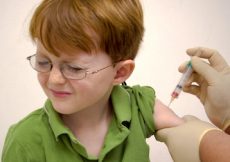My teenager mutilates and scarifies himself: what to do?
Self-mutilation is a fairly common behavior among teenagers all over the world. This is a scary behavior that may alert parents about their child’s mental health. Unfortunately, no one is immune to the various ills of adolescent mutilation… A very reasonable teenager can start self-harming in different ways. Some tear out their eyelashes and eyebrows, others burn their forearms with cigarettes… I have also seen in my job as a therapist young people who draw themselves on their forearms using the pointed side of a compass… Laceration and mutilation of the forearms is common.
Of course, this behavior makes the teenager suffer both physically and mentally. It is above all, for him, a way of exteriorizing all what is wrong inside. What derails inside, mentally, is expressed by an outer derailment. The teenager targets his body. A body that he already considers in transition and in drift as he is affected by changes at this age.
Very concretely, what should parents do when they discover mutilating behavior in their teenager?
First of all, I recommend that parents do not themselves undertake a wild psychoanalysis of their child! We all have some background in psychology and we have all read books on the subject of adolescence. However, your knowledge is probably insufficient and too oriented to be able to help your child in this way. It’s hard to be objective about your own child. While participating in the resolution of the problem, it is necessary to entrust the pathology to a third party.
Of course, communication matters. But there are two kinds of communication. Active listening is recommended. It is absolutely not a question of talking for hours and hours. This kind of conversation only leads to a stigmatization of the behavior and of the teenager!
In general, it is recommended to speak “better” in approaching the right concepts with the right and well-chosen words than to offer unbridled conversations that will aggravate the problem or make the teenager feel guilty.
In sophrology I happen to meet children and adolescents who scarify themselves.
First important point: scarification has a function of exteriorization. It is not because a teenager scarifies himself that he will necessarily end his life! It is of course necessary to estimate the adolescent’s desire to live. But do not think that this is necessarily a call for help to “survive”! On the other hand, the gesture of scarification is another kind of call for help: the adolescent wants his problems to be taken into account, recognized and perhaps even taken care of.
If you have to take him to see a psychologist, you must first be sure that he agrees with this idea!
If you do not warn him then the teenager will reject this approach even if it could prove to be life-saving for him.
Here are some basics about the act of scarification. They should enlighten you!
– Self-mutilation is above all an act of relieving inner suffering
– This behavior involves infectious risks
– Parental feedback is a key to resolving dysfunctional behaviors
– There are suicidal risks associated with the gesture but not always. It is not because a teenager scarifies himself that he will want to end his life. HOWEVER it is necessary to check if other proofs contribute to the hypothesis of a projection of suicide! If you find messages calling for help or threats to end your life, you must react immediately.
Faced with the strong emotion of discovering a scarification, here are some behaviors to adopt:
– It is better to approach the subject directly
– Avoid judging the behavior or worse the teenager. It is better to avoid lecturing the child. Offer to meet a professional.
– You must address the problem of shame and guilt.
-Talk to him about his suffering. Avoid telling him that he has everything to be happy and no reason to be unhappy! You can’t judge how he feels.
-Avoid talking about a trend or saying that he did this to do like the others.
-Do not make the child feel guilty any more by making him promise never to do such an act again.
If the behavior persists or the location of the carifications evolves towards the throat or the face, you must immediately consult a psychiatrist!
At my sophrology practice office, I talk with adolescents about their personal situation, their feelings. Without dwelling on the problem, I offer classic relaxation and sophrology exercises to work on both mental and physical well-being.
In general, when the sophrology process takes place; the teenager rediscovers his body and his spirit in a much more positive way and the scarifications become rare. When the teenager appreciates the well-being provided by sophrology, he begins to love himself more and learns to protect his mental potential and his body.
Of course in case of self-scarification you should always consult a psychiatrist. But you should know that a serious relaxation work carried out on the body and the mind can soothe these disorders, until a potential total disappearance of this behavior.


































